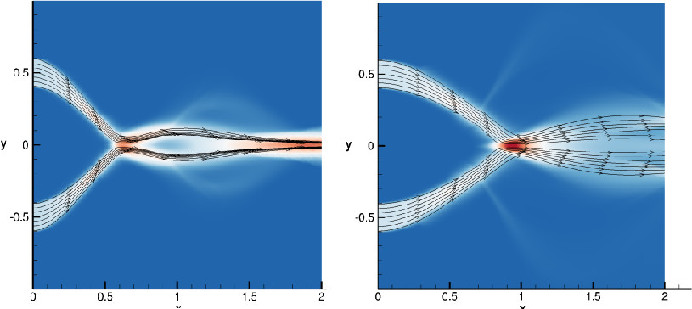Computational Fluid Dynamics Society of Canada Conference (2021)
Computational Fluid Dynamics Society of Canada Conference (2021)
High-Order Maximum-Entropy Moment Closures for Modelling Polydisperse Polykinetic Liquid Sprays
Co-Authors: Groth, Clinton P. T.; Xu, Hang; Hu, John T. C.
The use of Eulerian-based moment closure methods for the modelling of disperse liquid sprays offers numerical advantages over other commonly used methods. In particular, Lagrangian-based methods can be computationally expensive and efficient parallel implementations of the algorithms are often difficult to achieve when coupled with an Eulerian treatment for the background gas phase. Eulerian-based moment methods are less expensive as the costs of solving at a minimum an eight dimensional kinetic equation for the number density function (NDF) describing the distribution of liquid droplet droplets in terms of their size and velocity is replaced by solving a coupled system of partial differential equations describing the transport of various macroscopic quantities or moments in just physical space and time. In this study, two approximate high-order maximum-entropy-based closures in velocity space are coupled to a 5-moment maximum-entropy closure in droplet size space to model the behaviour of polydisperse polykinetic sprays. The two approximations of the high-order 14-moment maximum-entropy closures in velocity space (14-moment in three space dimensions, 5-moment in one space dimension) considered here are an interpolative-based approach and a closure based on a bi-Gaussian approximation for the distribution function. A coupled size velocity moment method (CSVM) is then adopted in which the size conditional velocity moments representing droplet mass and momentum are then taken to be polynomial functions of droplet size, whereas other higher-order moments are assumed to be equal for all droplet sizes. Theoretical considerations and numerical implementation of such a "partially" polydisperse high-order closure treatment is presented along with results for canonical particle trajectory crossing problems which demonstrate the predictive capabilities of the proposed closures.
 Image: Computed particle trajectory crossing for (left) drops of size 0.25 and (right) drops of size 0.75 derived from a partially polydisperse result.
Image: Computed particle trajectory crossing for (left) drops of size 0.25 and (right) drops of size 0.75 derived from a partially polydisperse result.